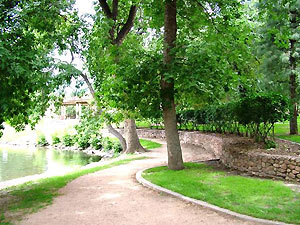National and State Register
Monument Valley Park
El Paso County
This two-mile long ribbon of public park land green is the most significant component of the open spaces donated by city founder William Jackson Palmer that formed the nucleus of the public park system. Palmer envisioned its creation, acquired the land, provided direction for its development, and paid the immense cost of its initial improvement. He selected the original landscape architect and worked closely with the engineer to insure that the design and plantings proceeded according his exacting specifications.
Monument Valley Park is considered the most significant of Palmer’s park donations, and it was the most extensively planned and improved. It most represents his philosophies of park use and development, including an emphasis on preserving and utilizing existing topography, enframing scenic views, employing native materials and vegetation, and most notably excluding motorized vehicles. Creation of this park was one of the largest local employment projects in the city during 1904-07. The park has served as a place of quiet contemplation as well as for active recreation.
The park exhibits the work of landscape architects and planners Charles W. Leavitt, Jr. and Charles Mulford Robinson, as well as that of engineer Edmond C. van Diest. Architecturally, the Rustic style is displayed in early 20th century park resources and translated by the WPA in the 1930s into a number of native stone park features (such as bridges, ditches, seating areas, retaining walls, entrances, monuments and overlooks). Following the 1935 Memorial Day flood, the Works Progress Administration focused major efforts on the park. Flood debris cleanup, creek re-channeling, building and structure restoration, and the erection of new monuments and structures, all provided a major source of local employment during the Great Depression.


